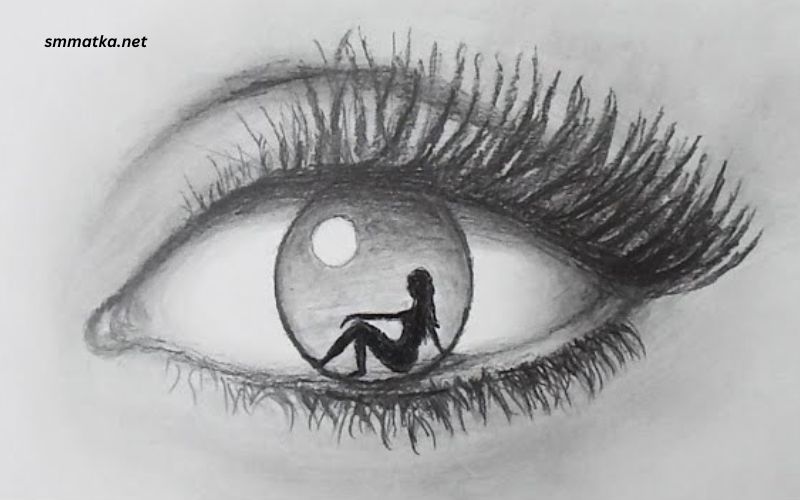Pencil drawing, one of the oldest and most accessible forms of art, offers a vast playground for creativity and expression. Whether you are a novice doodling on a notebook or an experienced artist crafting intricate portraits, the humble pencil can bring to life a multitude of ideas. In this article, we will delve into the world of pencil drawing, exploring the techniques, styles, and nuances that make this art form both challenging and rewarding.
The History and Evolution of Pencil Drawing
The art of pencil drawing dates back to the Renaissance period when artists like Leonardo da Vinci and Michelangelo used rudimentary pencils made of graphite encased in wood. These early pencils were crude compared to modern standards, but they allowed artists to sketch out ideas quickly, experiment with compositions, and plan larger works.
The pencil as we know it today evolved in the 19th century, with the development of more refined graphite and wood-cased pencils. The introduction of different grades of graphite allowed for a wider range of shading and detailing, which expanded the possibilities of pencil art. This evolution transformed pencil drawing from a preparatory tool into a respected art form in its own right.
The Essentials: Tools and Materials
To begin your journey into pencil drawing, understanding the tools and materials at your disposal is essential. The basic tools include:
- Pencils: Pencils come in various grades, ranging from hard (H) to soft (B). The harder the pencil (e.g., 4H), the lighter the mark it leaves, making it ideal for fine details. Softer pencils (e.g., 6B) produce darker, more intense lines, which are perfect for shading and creating depth.
- Paper: The texture of the paper plays a significant role in how your drawing will turn out. Smooth paper is ideal for detailed work, while textured paper (such as cold-pressed paper) can add a unique dimension to your drawing, enhancing the depth and realism.
- Erasers: Erasers are not just for correcting mistakes. Kneaded erasers, for example, can be molded into different shapes to lift graphite off the paper gently, creating highlights and soft edges.
- Blending Stumps: These tools are used to blend and smooth out pencil marks, helping to create a more realistic and polished look.
- Fixatives: Applying a fixative spray can protect your finished drawing from smudging and preserve its quality over time.
Techniques for Mastery
Mastering pencil drawing involves learning and practicing various techniques. Here are some essential techniques that every aspiring pencil artist should explore:
- Hatching and Cross-Hatching: These techniques involve drawing parallel lines (hatching) or intersecting lines (cross-hatching) to create texture and shading. The density and direction of the lines can convey different tones and textures.
- Blending: Blending involves smoothing out pencil marks using a blending stump, tissue, or even your finger. This technique is crucial for creating gradients, soft shadows, and realistic textures.
- Stippling: Stippling is a technique where tiny dots are used to build up areas of tone. The closer the dots, the darker the area appears. This method requires patience but can produce incredibly detailed and textured results.
- Scumbling: Scumbling is a method of creating texture by using small, circular motions with your pencil. This technique is often used to create soft, textured areas, such as skin or fabric.
- Sgraffito: Sgraffito involves scratching into the surface of the drawing to reveal the paper beneath or underlying layers of graphite. This technique can create striking contrasts and add a unique texture to your work.
- Negative Drawing: Instead of focusing on the positive space (the subject itself), negative drawing emphasizes the space around and between objects. This technique is particularly useful for creating high-contrast images.
Exploring Styles in Pencil Drawing
Pencil drawing offers a wide range of styles, each with its own appeal and challenges. Here are some popular styles to consider:
- Realism: Realism focuses on capturing the subject as accurately as possible, with meticulous attention to detail, shading, and texture. Realistic pencil drawings often resemble black-and-white photographs and require a high level of skill and patience.
- Surrealism: Surrealist pencil drawings blend reality with fantasy, often depicting dreamlike scenes and impossible juxtapositions. This style allows for immense creative freedom and encourages artists to push the boundaries of imagination.
- Abstract: Abstract pencil drawings emphasize form, line, and composition rather than realistic representation. This style can range from simple geometric shapes to complex, non-representational compositions that evoke emotion or movement.
- Cartooning and Illustration: Pencil is a versatile medium for cartooning and illustration, allowing artists to create everything from simple line drawings to detailed, shaded characters. This style is often used in comic books, animation, and children’s books.
- Portraiture: Portraiture in pencil focuses on capturing the likeness and personality of the subject. This style requires a deep understanding of anatomy, proportion, and shading to convey the nuances of expression and emotion.
Developing Your Skills
As with any art form, practice is key to improving your pencil drawing skills. Here are some tips to help you develop your abilities:
- Practice Regularly: Set aside time each day to draw, even if it’s just for a few minutes. Consistent practice will help you refine your techniques and develop your style.
- Study from Life: Drawing from life, whether it’s still life objects, landscapes, or people, helps you observe and understand the world around you. Life drawing teaches you to capture the subtleties of light, shadow, and texture.
- Experiment with Different Subjects: Don’t limit yourself to one type of subject. Experiment with drawing landscapes, portraits, animals, and abstract compositions to broaden your skills and discover new interests.
- Seek Feedback: Sharing your work with others and seeking constructive feedback can provide valuable insights and help you identify areas for improvement.
- Learn from Masters: Study the work of renowned pencil artists, both past and present. Analyze their techniques, compositions, and use of light and shadow to gain inspiration and learn new approaches.
- Set Challenges: Push yourself by setting challenges, such as drawing a portrait using only cross-hatching or creating a surreal scene using negative drawing. These challenges can help you step out of your comfort zone and discover new techniques.
The Psychological Benefits of Pencil Drawing
Pencil drawing is not only a creative outlet but also a therapeutic activity with numerous psychological benefits. Engaging in pencil drawing can reduce stress, improve focus, and promote mindfulness. The act of drawing allows you to enter a state of flow, where time seems to disappear, and you become fully absorbed in the creative process. This meditative quality of drawing can provide a sense of calm and relaxation, making it an excellent practice for mental well-being.
Moreover, the satisfaction of completing a drawing, whether simple or complex, can boost self-esteem and provide a sense of accomplishment. The process of creating something tangible from a blank sheet of paper can be incredibly rewarding and fulfilling.
Challenges and Overcoming Them
Like any skill, pencil drawing comes with its own set of challenges. Some common challenges artists face include:
- Proportions: Achieving accurate proportions, especially in portraiture, can be difficult. To overcome this, practice measuring and comparing different parts of your subject, and use guidelines to help maintain accurate proportions.
- Shading: Mastering shading to create realistic depth and texture requires patience and practice. Experiment with different pencil grades and techniques, such as cross-hatching and blending, to improve your shading skills.
- Smudging: Pencil drawings are prone to smudging, which can ruin your work. To avoid this, work from top to bottom or left to right (if you’re right-handed), and consider using a fixative spray to protect your finished drawing.
- Creativity Block: At times, you may struggle with a lack of inspiration or creativity. When this happens, try exploring new subjects, experimenting with different styles, or taking a break to recharge.
Conclusion
Pencil drawing is a timeless and versatile art form that offers endless possibilities for creativity and self-expression. Whether you are drawing realistic portraits, abstract compositions, or imaginative scenes, the pencil allows you to explore the depths of your imagination and bring your ideas to life. By mastering various techniques, experimenting with different styles, and practicing regularly, you can develop your skills and create stunning works of art that reflect your unique vision.
Moreover, the act of drawing offers not only artistic fulfillment but also psychological benefits, making it a rewarding practice for both the mind and soul. So pick up your pencil, let your creativity flow, and embark on a journey into the captivating world of pencil drawing.

